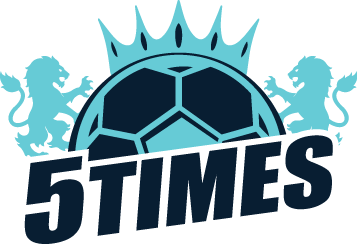
Understanding how betting odds work is a must for anyone stepping into the world of sports betting, whether you’re betting on the Premier League, Wimbledon, or the Grand National. But with all the different types of odds out there—fractional odds, decimal odds, and American odds—things can quickly get confusing.
This guide breaks it all down in plain English, giving you a no-nonsense explanation of what betting odds mean, how they’re calculated, and how to read betting odds across various formats. Whether you’re checking the odds on a horse, trying to find the best betting sites, or simply figuring out how much you’d win on a fiver, this article is your go-to guide to everything odds-related.
Betting Odds Explained: What Are Betting Odds And How Do They Work?
At their core, betting odds are the numbers that show how likely something is to happen and how much you’ll win if it does. Think of odds as the language of bookmakers—a way to express the probability of an event and what your potential return will be.
When we talk about how betting odds work, we’re really talking about two things:
- The likelihood of an outcome (how likely to win a bet is)
- The return you’ll get if your bet lands
The odds are calculated by bookmakers based on how likely the outcome is. The less likely it is to happen, the higher the potential reward—hence the term “higher odds.” Odds also tell you how much profit you’ll make on a winning bet compared to your stake.
Let’s say you’re betting £10 on a horse at odds of 5/1. If it wins, you’ll get £50 profit plus your £10 back. The odds are the ratio of profit to stake.
How Do Fractional Odds Work?
Fractional odds are the traditional format used by UK betting sites and bookmakers. They’re written like this: 5/1, 10/3, or even 6/5. This is what most punters in Britain will see when betting on football, horse racing, or tennis.
These odds represent how much profit you’ll make compared to your stake. For example:
- Odds of 4/1 mean you’ll win £4 for every £1 you stake.
- Odds of 1/2 mean you’ll win 50p for every £1 staked.
When we talk about fractional odds explained, remember this simple rule:
The second number is your stake; the first is your profit.
Fractional odds are easier to understand for UK punters, especially when it comes to football betting sites and popular online betting platforms. They’re also commonly used in horse racing betting, where punters often compare odds offered across the board.
How Do Decimal Odds Work?
Decimal odds are commonly used in Europe and are increasingly popular across modern betting sites and betting apps. With decimal odds explained, the total return (including your stake) is built into the number.
For example:
- Decimal odds of 3.00 mean you’ll get £30 back from a £10 bet—£20 profit plus your £10 stake.
- Decimal odds of 1.50 return £15 from a £10 stake—£5 profit.
The appeal of using decimal odds is their simplicity. They’re easier to work out than fractional odds, particularly for newcomers. If you want to work out the percentage return, take one divided by the decimal odds, then multiply by 100.
Many consider decimal odds easier to understand, especially when converting betting odds or comparing across different betting sites. They’re now widely used by some of the best betting sites in the UK and abroad.
How Do American Odds Work?
Now, let’s talk about American odds, also known as moneyline odds. These odds are popular in the U.S. but increasingly found on betting websites with international markets. American betting odds can look intimidating at first, but they follow a clear format:
- Positive odds (e.g. +200) show how much profit you’ll make from a £100 stake.
- Negative odds (e.g. -150) show how much you need to stake to win £100.
So if you see odds of -150, it means you need to stake £150 to win £100 profit. If the odds are +150, a £100 stake would win you £150 profit.
American odds are also useful for bettors who want a fast comparison of underdogs vs favourites. Remember:
- Positive odds = underdog (less likely to win)
- Negative odds = favourite (more likely to win)
Though not used in the UK often, it’s good to know about betting odds in this format, especially if you bet with international betting sites or watch the Super Bowl.
How Do Odds Indicate Probability?
Understanding how odds work also means understanding how they relate to probability—or how likely something is to happen. Bookmakers use odds to represent the implied probability of an event.
Here’s the trick:
- Decimal odds: Implied probability = 1 / decimal odds
- Fractional odds: Convert to decimal, then use the same formula
- American odds: Slightly different maths, but the principle is the same
For example, decimal odds of 2.00 suggest a 50% chance of the event happening. Odds of 4.00 suggest a 25% chance.
Odds tell you not just how much you’ll win, but how likely the outcome is based on the odds listed. The probability of betting odds shown is just as important as the payout.

How To Read Betting Odds Properly
If you want to be successful at sports betting, you need to know how to read odds confidently. Here’s how:
- Fractional: The first number is your profit, the second is your stake
- Decimal: One number shows the full return (stake + profit)
- American: Positive = profit on £100, Negative = stake required for £100
Once you understand how to read betting odds, you can start comparing odds across various betting websites and pick the most valuable ones. Odds allow you to calculate your potential returns, so the better you read odds, the smarter your wagers will be.
How To Convert Fractional Odds To Decimals (And Vice Versa)
When using different odds formats, it helps to know how to switch between them. To convert fractional odds to decimal, simply divide the fraction and add 1.
Example:
- 5/1 = 5 ÷ 1 = 5 + 1 = 6.0 (decimal odds)
- 1/4 = 1 ÷ 4 = 0.25 + 1 = 1.25 (decimal odds)
This is crucial when different betting sites display odds in various formats. Learning how to convert betting odds gives you a sharper edge when comparing markets.
Odds use can differ across regions, but this trick works universally. It also helps when trying to find the best odds on any event.
What Are The Different Types Of Odds?
To recap, there are three main types of odds you’ll come across:
- Fractional odds – traditional UK format
- Decimal odds – modern and often found online
- American odds – used on US-focused platforms
Each odds format serves the same purpose: showing how much you’ll win based on your stake. Some people find decimal odds easier to understand, while others prefer the old-school odds as a fraction system.
Knowing what odds mean in each format is key to getting ahead in the world of sports betting odds. Use them to your advantage—whether you’re placing a bet with a UK bookmaker or on a global betting app.
Why Odds Are Different On Various Betting Sites
You might notice the odds offered aren’t always the same across every betting website. This is because bookmakers set their odds based on their own analysis, liabilities, and strategies.
One site might offer 2.10 on a football match, while another offers 1.95. These small changes in display odds can mean a big difference in returns, especially with bigger bets.
This is why savvy punters compare odds across platforms before placing a bet. The best betting sites usually offer competitive prices, and it’s always smart to go with one of the best betting apps or platforms to maximise value.
What Is The Best Type Of Odds Format To Use?
There’s no “best” format—it comes down to personal preference. If you’re from the UK, you’re probably used to fractional or decimal odds. International bettors may lean towards moneyline odds or US odds.
Some prefer decimal odds because they’re clearer and easier for quick calculations. Others prefer the traditional feel of fractional odds, especially for horse racing or football betting.
Ultimately, the format doesn’t change the odds themselves—just how they’re shown. The goal is to find the best value and stake by the odds that give you the biggest return.

Final Thoughts: Mastering How Betting Odds Work
Sure! Here’s the strong conclusion to replace the bullet point summary at the end of your article on How Do Betting Odds Work: Betting Odds Explained, written in British English and styled like Sky Sports content:
Final Whistle: Why Understanding Betting Odds Matters
Whether you’re eyeing the weekend’s football fixtures or fancy a punt on the horses at Cheltenham, knowing how betting odds work is absolutely essential. They’re not just random numbers slapped next to a team name – they’re carefully calculated indicators of probability, potential payout, and risk. The odds tell a story: who’s favoured, who’s the underdog, and how much you stand to win if you’re backing the right outcome.
From fractional odds used by your typical UK bookmaker, to decimal odds preferred on many online betting sites, and even American odds used in the States, each format gives you a different lens into the same betting market. Whether you’re converting betting odds, comparing different odds formats, or simply learning how to read betting odds clearly, it’s all about making informed decisions and getting the best value from your wager.
In a competitive world of betting apps and football betting sites, punters who truly understand the odds—how they’re calculated, what they mean, and how to read them—are already one step ahead. Betting isn’t just luck. It’s insight, timing, and clarity. So the next time you see odds displayed on your favourite betting site, you’ll know exactly what they mean—and more importantly, how to use them to your advantage.










